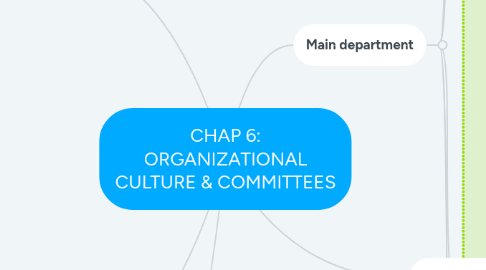
1. Management
1.1. 5 Functions
1.1.1. Planning
1.1.1.1. Forecasting
1.1.1.2. Establishing objectives
1.1.1.3. Devising strategies
1.1.1.4. Developing policies
1.1.2. Organizing
1.1.2.1. Organizational design
1.1.2.2. Job specialization
1.1.2.3. Job descriptions
1.1.2.4. Span of control
1.1.2.5. Coordination
1.1.2.6. Job design
1.1.2.7. Job analysist
1.1.3. Motivating
1.1.3.1. Leadership
1.1.3.2. Communication
1.1.3.3. Work Group
1.1.3.4. Behavior Modification
1.1.3.5. Delegation of authority
1.1.3.6. Job enrichment
1.1.3.7. Job satisfaction
1.1.3.8. Need fulfillment
1.1.3.9. Organizational change
1.1.3.10. Employee morale
1.1.3.11. Managerial morale
1.1.4. Staffing
1.1.4.1. Wage and salary administration
1.1.4.2. Employee benefits
1.1.4.3. Interviewing
1.1.4.4. Hiring
1.1.4.5. Firing
1.1.4.6. Training
1.1.4.7. Management development
1.1.4.8. employee safety
1.1.4.9. Equal employment opportunity
1.1.4.10. Union relations
1.1.5. Controlling
1.1.5.1. Quality control
1.1.5.2. Financial control
1.1.5.3. Sales control
1.1.5.4. inventory control
1.1.5.5. Expense control
1.1.5.6. Analysis of variances
1.1.5.7. Rewards
1.1.5.8. Sanctions
2. Bussiness culture
2.1. refers to the beliefs and behaviors that determine how a company's employees and management interact and handle outside business transactions
2.2. influenced by national cultures and traditions, economic trends, international trade, company size, and products.
3. Committees
3.1. represent people, groups, and interests outside of the group.
3.2. Team members
3.2.1. committed to the shared goal of the team
3.2.2. promise to be accountable for the end result being delivered and often implemented.
4. Main department
4.1. Research & development
4.1.1. Basic Research
4.1.1.1. Applied Reseach
4.1.1.1.1. Development Research
4.2. Purchasing
4.2.1. Price
4.2.2. Reliability
4.2.3. Quality of raw materials
4.2.4. Quantity
4.2.5. Location
4.2.6. Delivery time
4.3. Production
4.3.1. Method of production
4.3.1.1. Job
4.3.1.2. Batch
4.3.1.3. Flow
4.3.2. Land
4.3.2.1. All ntural resources used in production
4.3.3. Labour
4.3.3.1. All people used in production
4.3.4. Capital
4.3.4.1. All items used to make other things in production
4.3.5. Enterprise
4.3.5.1. The art ofbringing together the other factors of production and being successfull
4.4. direct sercive provision
4.5. Marketing
4.5.1. Not just about selling
4.5.2. Satisfying customer needs
4.5.3. Increase sales & maximize profits
4.5.4. Improve the image of the firm
4.5.5. Functions
4.5.5.1. Customer analysis
4.5.5.1.1. The examination and avaluation of customer needs, desires, and wants
4.5.5.1.2. Involves
4.5.5.2. Selling products and services
4.5.5.2.1. Selling
4.5.5.3. Product and service planning
4.5.5.3.1. Includes
4.5.5.3.2. Important when a company iss pursuing product development off diversification
4.5.5.4. Pricing
4.5.5.4.1. Affected by
4.5.5.4.2. Sometimes, an organization will persue a forward intrgration strategy primarily to gain better control over prices charged to consumers
4.5.5.5. Distribution
4.5.5.5.1. Includes
4.5.5.5.2. Important when
4.5.5.6. Cost/benefit analysist
4.5.5.6.1. 3 steps
4.5.6. Marketing research
4.5.6.1. The systematic gathering, recording, and analyzing of dât about problems relating to the marketing of goods and services
4.5.6.2. Can uncover critical strengths and weaknesses
4.5.7. Market research
4.5.7.1. the process of determining the viability of a new service or product through research conducted directly with potential customers
4.5.7.2. allows a company to discover the target market and get opinions and other feedback from consumers about their interest in the product or service.
4.5.8. Marketing mix
4.5.8.1. efers to the set of actions, or tactics, that a company uses to promote its brand or product in the market
4.5.8.2. 4Ps: Price, Product, Promotion and Place
4.6. Administration
4.7. Finance
4.7.1. Function
4.7.1.1. Treasurery management
4.7.1.2. Management accounting
5. Organizational Culture
5.1. A pattern of behavior has been developed by an organization as it learns to cope with its problem of external adaptation and internal intergration and that has worked well enough to be considered valid and to be taught to new members as the correct way to perceive, think and feel
5.2. Culture products
5.2.1. Values
5.2.2. Belief
5.2.3. Rites
5.2.4. Ritual
5.2.5. Ceremonies
5.2.6. Myths
5.2.7. Stories
5.2.8. Legends
5.2.9. Sagas
5.2.10. Language
5.2.11. Metaphors
5.2.12. Symbols
5.2.13. Folktales
5.2.14. Heroes and heroines
